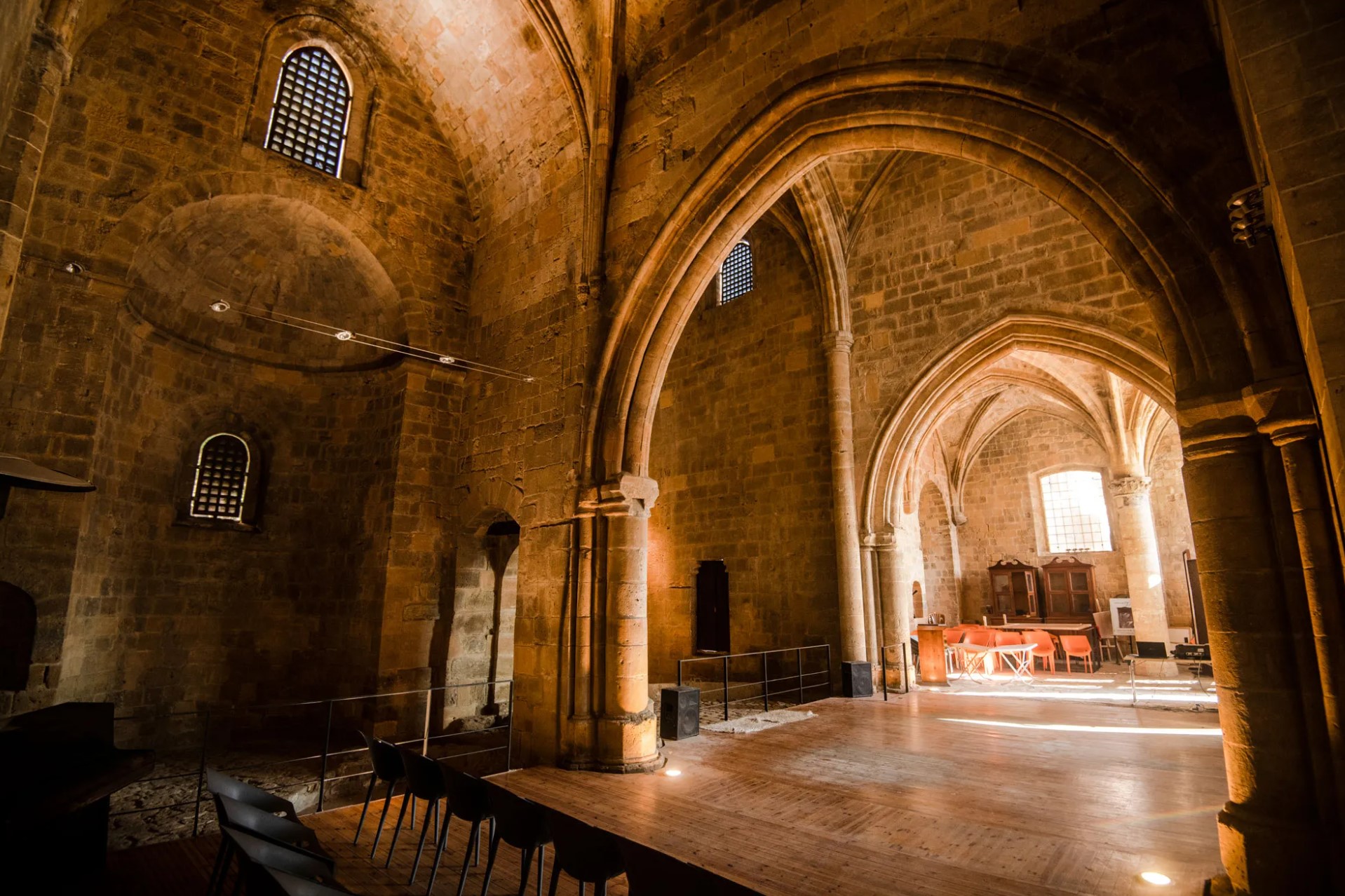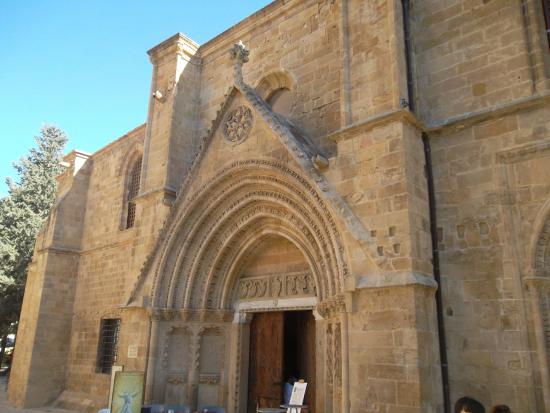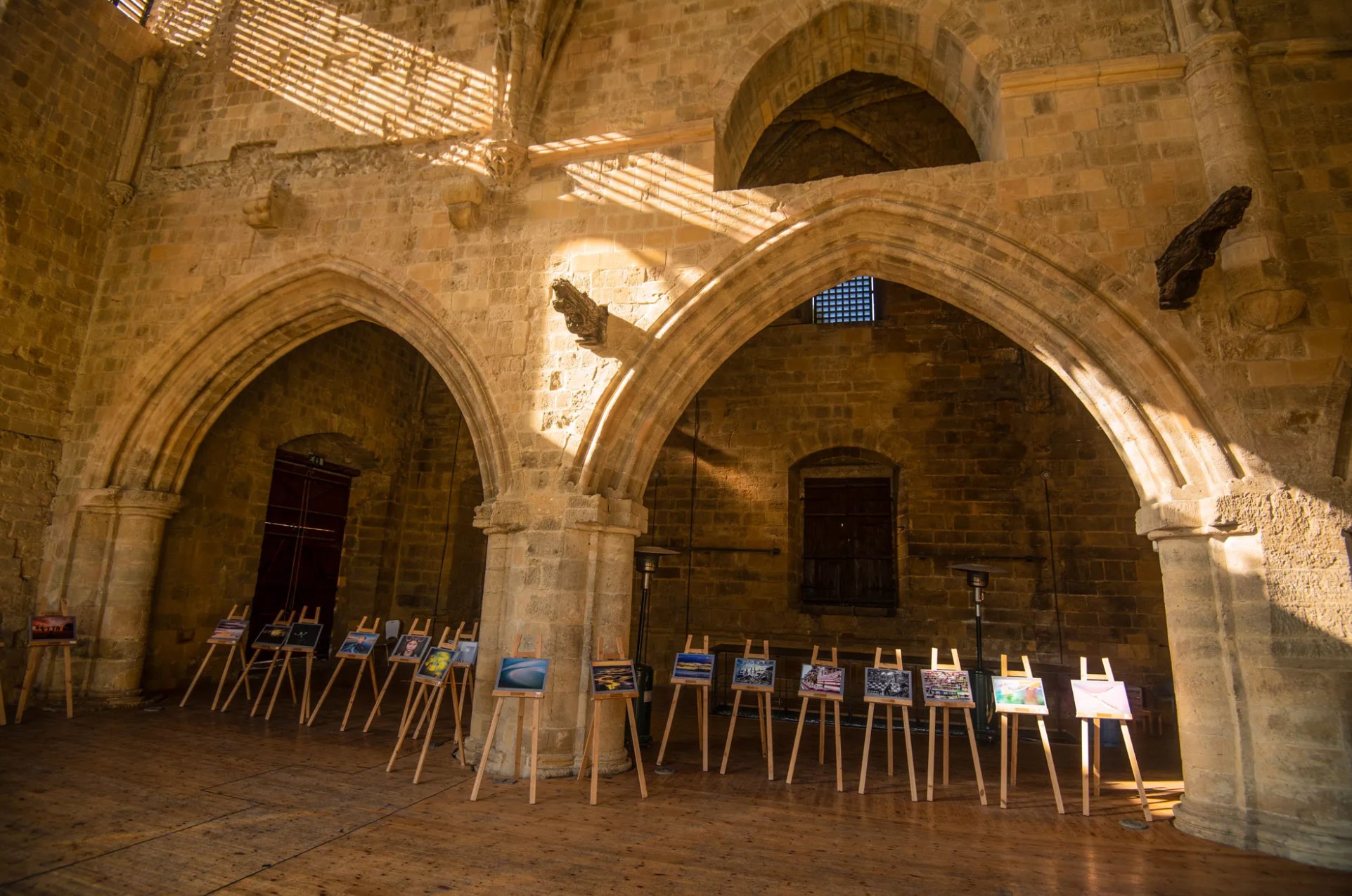


The Bedesten is one of the most important historical buildings in Nicosia, reflecting the multicultural life and diverse past of the city.
Bredesen or Bedestan is a historical building in the Selimiye quarter of Nicosia, sited between the Selimiye Mosque and the Bandabuliya. This structure has a long and complicated history spanning more than one thousand years. Originally built as a church in about the 6th century, it was expanded and rebuilt between the 12th and 16th centuries and converted to a covered market during the period of Ottoman rule.
The earliest history of the Bedesten is documented archaeologically by a Byzantine basilica, fragments of which are preserved inside the current building. When enlarged, Gothic additions were made by the Lusignans and after further changes by the Venetians, the building was handed over to the Greek Orthodox church and used as a cathedral. Under the Ottomans, until the beginning of British rule, the Bedestan was the busiest and most important marketplace in Nicosia, and slowly evolved into a marketplace where all kinds of goods were sold especially textiles.
The Bedesten of Nicosia is stylistically very different from other Bedestens in the Ottoman Empire and architecturally incorporates elements of Renaissance French, Venetian, and probably Spanish styles. It uses a cross-shaped structural style and layout that belongs to the Byzantine style, yet incorporates a nave with a high ceiling that belongs to the Gothic style. The southern double nave is a remnant of the Byzantine church and its middle section is the oldest part of the building. The exterior of the nave in the north has the most ornate decorations and stonework in the building. This façade is across the front arches of the Selimiye Mosque and is the side where the entrance is located. The entrance is through a very ornate Gothic-style gate, with elements of the Italian Renaissance architecture added later and a statuette of St Nicholas. Coats of arms are located on both sides of the entrance. This façade also has numerous animal statuettes and gargoyles.
The Bedesten of Nicosia is stylistically very different from other Bedestens in the Ottoman Empire.[6] It consists mainly of a mix of Byzantine and Gothic architecture, the latter being added by the Lusignans, but also incorporates elements of Renaissance French, Venetian, and probably Spanish architectural styles. It uses a cross-shaped structural style and layout that belongs to the Byzantine style, yet incorporates a nave with a high ceiling that belongs to the Gothic style. The southern double nave is a remnant of the Byzantine church and its middle section is the oldest part of the building. The exterior of the nave in the north has the most ornate decorations and stonework in the building. This façade is across the front arches of the Selimiye Mosque and is the side where the entrance is located. The entrance is through a very ornate Gothic-style gate, with elements of the Italian Renaissance architecture added later and a statuette of St Nicholas. Coats of arms are located on both sides of the entrance. This façade also has numerous animal statuettes and gargoyles.
